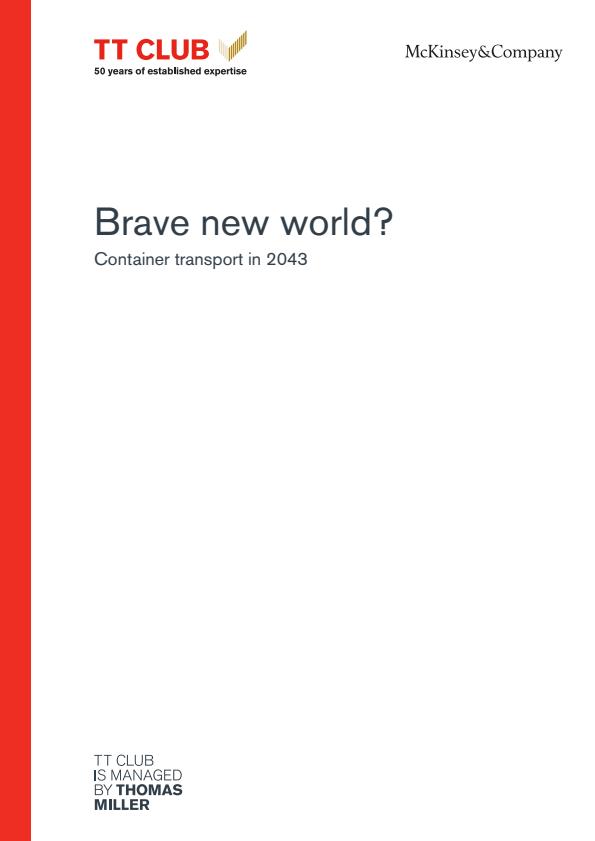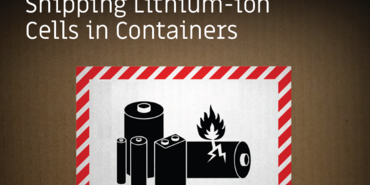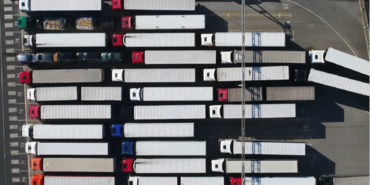Brave New World
Container transport in 2043
What does the future hold for the container transport industry? To mark the 50th anniversary of the TT Club, we decided to fast forward to 2043 and report back.
In conjunction with global management consulting firm McKinsey, TT Club has published 'Brave new world?', a wide-ranging report summarising the passionate thoughts and opinions of industry leaders on what the future holds for the container industry over the next 25 years.
Is your business future ready? What changes can we expect over the next 25 years?
The container transport industry has been at the centre of the incredible expansion in international trade since the 1950s. Commercialised in 1956, the container’s simplicity and modularity has made it the mode of choice for the transport of many goods from one place to another: containers today transport 23% of dry seaborne trade tons (and close to 100 percent of everyday goods like televisions, toys, and clothing). Consumers have benefited enormously as the real cost of transporting goods has fallen. However, the success of the container has not always meant the financial success of the industry behind it. Returns for the average container liner operator, container terminal operator, or freight forwarder have lagged the cost of capital over the last two decades – and only a select few players have managed to find a sustainable recipe for value creation.
Will the future be any different? In this joint research project between TT Club and McKinsey & Company, there were some points of broad consensus about the next 25 years: the physical aspects of the industry (containers, terminals, ships) are unlikely to change; trade flows will become more balanced between and across regions; automation will be broadly adopted; digital, data, and analytics will fundamentally shift the sources of value creation; and the industry-leading players of 2043 may well look very different
from today’s leading companies (though they may be the same or similar companies).
At the same time, meaningful questions were raised about:
- The future of trade growth – e.g., globalisation and trade policy, Asian industrialisation, the geography of manufacturing with robotics and 3D printing, containerisation trends, and evolving
consumer habits - What the real sources of value creation might be going forward – e.g., scale, flexibility, consolidation and integration, productivity, more predictable supply chains, environmental performance
- Who “wins” – e.g., how can today’s industry leaders evolve to capture the opportunities, will players become more vertically integrated, or will “digital natives” including start-ups and/or
e-commerce firms reshape the industry
In the absence of foreknowledge, we can only imagine various futures and the implications of each. We posit four possible futures:
- Digital disruption is a world in which the current industry is disrupted by new players who leverage digital, data, and analytics to optimise the end-to-end value chain
- Digital reinvention envisages that the current industry digitises aggressively and provides new value-adding services to its customers
- Third wave of globalisation assumes other economies, like India and Africa, realise their manufacturing and export potential, while digital reduces friction in global supply chains and spurs continued trade growth
- “Peak container” and consolidation imagines a future in which trade wars, geopolitical tensions, and “near-shoring” result in the peaking and absolute decline in international trade, forcing players to further consolidate
Preparing for such a range of outcomes would be taxing for even the most agile and foresighted of companies. However, there are some “no regret” moves that industry players could make now to ensure flexibility in the future, including paying more attention to the dynamics around the end-consumer (as e-commerce disrupts retail and lastmile logistics), building organisational discipline around monitoring the “trigger points” behind different futures, and radically digitising and automating.
Documents
Brave New World - Full report (6.58 MB) 23/05/2018
Brave New World - Executive summary (134 kB) 04/06/2018
Chapter 1 - Where we have been (462 kB) 31/05/2018
Chapter 2 - Where we are going (786 kB) 31/05/2018
Chapter 3 - Four visions of the future (854 kB) 31/05/2018
Chapter 4 - Preparing for the next 25 years (170 kB) 31/05/2018
- Author
- Staff Author
- Date
- 06/06/2018






